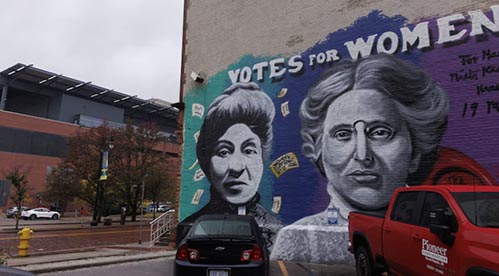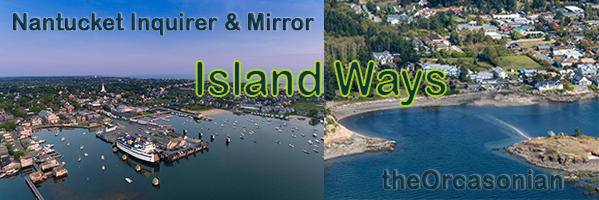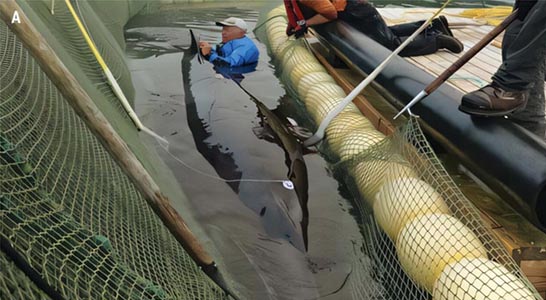— from Victoria Compton, Economic Development Council —
Over a half-century ago, the Carnegie Institute released a report on a contraption that was changing the way America received its information. This report suggested that the technology could reinvent the way that education was delivered to American children, that it could help lift kids out of under-educated poverty and pave the way for their economic security.
That contraption – the television – went on to fundamentally change the way that most of us receive information. As a result of that Carnegie Institute report, shows like Sesame Street were created to reach and educate all kids.
And just like the television (or the radio – or books – before it), broadband has the capability of completely changing and improving the way educational content is delivered to us. Indeed, it already is improving the delivery of educational content, making it on-demand, specific, and giving us instant access to any content conceivable.
Broadband has the potential to reinvent businesses – opening markets and globalizing businesses in ways that were not even imaginable 30 years ago. Broadband has the potential to keep our homes – and ourselves – safer.
Access to high-speed internet is a fundamental catalyst to the improvement of communities’ economic health. A study by the Brookings Institution has shown that for every one percentage point increase in fast broadband penetration, employment is projected to increase by around .25 percent a year (https://bit.ly/GG0ZuA)
Recognizing that fact, in 2009 the San Juan County Economic Development Council (EDC), in concert with the San Juan Island Community Foundation, created a workgroup to assess gaps in communications infrastructure and service, and to set goals to improve broadband service in San Juan County.
After those initial workgroup sessions, a stakeholder meeting and a county-wide needs assessment survey, it became clear that San Juan County needed improved broadband for economic development, public safety, education and other quality of life issues.
In 2010, we at the EDC approached all existing service providers to discuss how to solve this county-wide problem. It became clear that, with more than 100 miles of fiber-optic cables already installed and a keen interest in improving the county’s economy and well-being, OPALCO was ideally positioned to help solve this problem. Fortunately, the board of directors at OPALCO saw the benefits of co-op members having access to high-speed broadband, and they stepped up to lead this effort.
Indeed, no other entity could offer the same infrastructure that OPALCO already had in place, nor were other companies truly interested in working to serve our community with a county-wide, full-scale expansion of broadband at low cost. OPALCO has access to extremely low-interest financing – financing no other provider could participate in. This minimizes debt service costs, making the project more affordable to the community.
With the purchase of Rock Island Communications in Friday Harbor, OPALCO’s infrastructure was coupled with Rock Island’s expertise and existing customer base. This accelerated progress and further reduced costs. With the addition of OPALCO’s partnership with T-Mobile and their investment in the LTE system, our community will have a modern standard of connectivity for broadband and cellular coverage.
The San Juan County Economic Development Council wholeheartedly supports OPALCO’s work on improving broadband in our county. As we have for the past six years, we support and encourage their efforts to connect our community, every step of the way.
Better broadband benefits everybody. Preschoolers, seniors, business owners, telecommuters, students, emergency services responders, and those who call on them for help – essentially, everyone in our county. Improving broadband makes good sense for us as a community.
**If you are reading theOrcasonian for free, thank your fellow islanders. If you would like to support theOrcasonian CLICK HERE to set your modestly-priced, voluntary subscription. Otherwise, no worries; we’re happy to share with you.**








In all of the discussions regarding Broadband, I haven’t seen any concern expressed about the adverse health effects of the Electromagnetic fields which accompany it. It seems as though because it is unseen it doesn’t matter if we have Towers with Cancer causing EMF penetrating our homes, businesses and schools. Children are at greater risk when they are bombarded with EMF in schools and their homes.
Now, the San Juan Islands are advertised on the Eastcoast as a great place to move and set up your Internet Business! Yes, this is a concerted effort to bring even More people here who will bring with them those attitudes that are inconsistent with the Values of those Islanders who came here for a slower paced Rural life! If memory serves the EDC had an article some months ago inviting potential business owners to a Meeting. One of the talking points to be presented was that they could pay LOWER wages to the workers here. To me, THAT says it all! So it doesn’t surprise me at all that this very supportive letter was written about OPALCO’S sneaky purchase of Rock Island.
People Do get a little crazy when they see dollar signs, I know that, but if we, Islanders who left the Mainland behind for good reasons don’t awaken from this nightmare soon…….
PS Do a Search on EMF fields and learn what conscious people are doing to Protect themselves and their loved ones from the unseen menace of EMF’s.
Spirit Eagle
@Spirit Eagle I agree with you on ~90%, but I am not a big fan of fear mongering. I don’t want to say that I trust everything on the “internet”, but this site has some interesting data on EMF: https://www.emfandhealth.com.
Joshua: Over the years, I have studied EMF’s surrounding and affecting every living thing on our Planet. The site you recommend is obviously supported by the Industries and World Organizations who gain from the disingenuous insinuations of “Poor Science” by respected Scientists from all Over The World who have been and presently are studying the effects of EMF Fields. If we care, we all have to study the problem by being open to a Truth that may be a bit scary to digest! For many, the comfort zones we live in may become very uncomfortable when we learn the effects of these EMF Fields.
In the ’90’s it was made Illegal to testify in Public Hearings regarding the Health Effects of EMF Fields! Since then, it’s been, pretty much, “Shut Up and we will tell you what is or is not good for you!”
The following is a very helpful talk about this subject and how to help ourselves.
https://www.emfanalysis.com/tedx-wireless-wake-up-call/
Spirit Eagle
And, laying aside the very real detrimental health effects of EMF fields on people and probably other life forms, and laying aside the possibility that a giant fail to the whole system can happen, crippling our grid if someone purposefully attacked our power grid – a likely scenario if the U.S. keeps up its agression wars on other countries – how about some answers to some practical questions, such as:
1) We are spending millions and millions of OPALCO stakeholders’ money on putting Fiber-optics into our submarine cables. How much does just the fiber-optics part cost, vs the electric part?
2) How much and how quickly does this fiber-optics technology change, and how fast does what we are currently installing become obsolete and need replacing?
3) When the technology improves, does that mean we have to lay the “new improved” fiber-optics in the underwater cables every time our current technology becomes obsolete? What will the costs of that be?
4) We’ve all experienced the outages caused by some vehicle hitting a fiber-optics pole on the mainland. With so much of this above-ground, how often can we expect these outages to happen?
5) Are we using the simplest and cost effective net grid to do the job, rather than the most complex and expensive grid, especially if this technology moves along as fast as computer technology and becomes obsolete in just a few years?
I think these questions warrant answers.
I would also like to know, who is the EDC – are they elected or appointed? Who are the members? What do they do?
Do they consider ecosystems as part of economic development? What are they doing to insure protection of forest ecosystems in the Eastsound Area landmass, considering its vulnerability to sea level rise and damaging winds? From what I know, two more important woods are about to be cut down. Has the EDC asked what will happen when there are no treed areas to buffer wind in a landmass one mile wide? If not, why not, and when will you consider these?